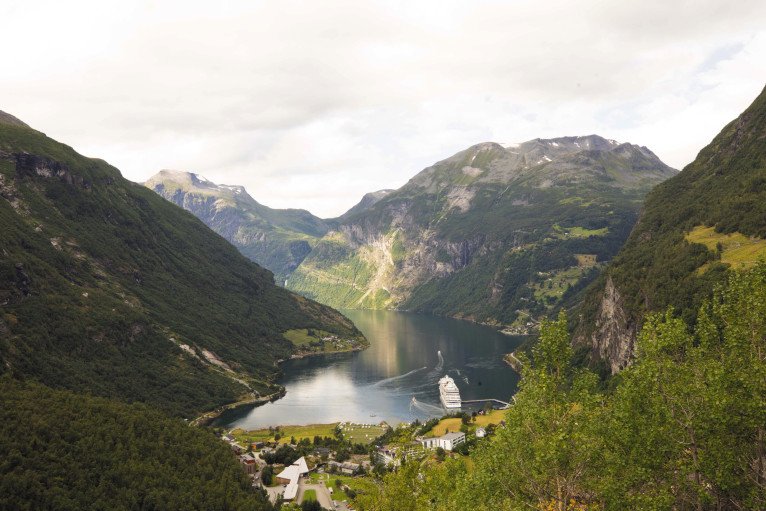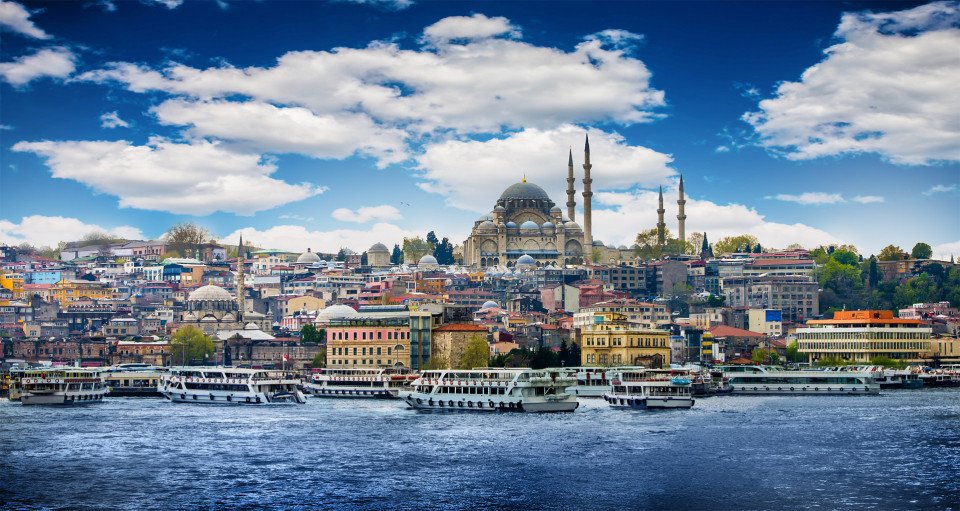(Prices correct as of today’s date, are updated daily, are subject to change and represent genuine availability at time of update).
Cruise only holidays are financially protected by ABTA. Fly cruise holidays are financially protected by Regent Seven Seas Cruises under ATOL number 10297
Please click here to check the essential travel requirements before booking this cruise.
Want to add a hotel stay or change your flights?
Just call our team of cruise specialists to help build your dream cruise holiday today!
Prices based on 2 people sharing. Cruise only price does not include flights. Fly-cruise price may vary by chosen UK airport.
THE
SIXSTARCRUISES DIFFERENCE
Our sister brand SixStarCruises specialise in luxury and ultra luxury cruise holidays. Click here to view this itinerary in full and speak to one of our specialist cruise concierge today. Our team are here to help you plan your perfect cruise holiday and guide you with first-hand experience with more time on board than any other UK luxury travel agent.
EXPERTISE
SERVICE
BUSINESS
RELATIONSHIPS
CONFIDENCE
SECURITY
rated 4.8 / 5
Itinerary
Trieste
Up until the end of World War I, Trieste was the only port of the vast Austro-Hungarian Empire and therefore a major industrial and financial center. In the early years of the 20th century, Trieste and its surroundings also became famous by their association with some of the most important... Read More
Trieste
Trieste
Adriatic Sea
Dubrovnik
Dubrovnik
Cruising the Ionian Sea
Heraklion (Iraklion), Crete
Heraklion (Iraklion), Crete
Piraeus
Piraeus
Cruising the Aegean Sea
Istanbul
Istanbul
What's Included with
Regent Seven Seas Cruises
Allow us to take care of every detail when you opt for the all-inclusive cruise fare. Regent Seven Seas Voyager cruise offer some incredible amenities including,
- FREE unlimited shore excursions in over 450 ports
- One night pre-cruise hotel stay for Concierge Suites or above
- FREE unlimited beverages, open bars and lounges
- In-suite mini-bar replenished daily
- Pre-paid gratuities
- Speciality restaurants with all meals included
- FREE unlimited Wi-Fi
- Valet laundry service
Entertainment throughout the day and evening
Return flights included from a choice of UK airports (fly cruise bookings only)
WiFi included on-board
Gratuities included on-board
24-hour room service
Self-service laundry
Shuttle service to and from ports and airport where available
Unlimited beverages
In-suite mini bar replenished daily
Butler service for selected suites
1:1.5 staff to guest ratio
Unlimited shore excursions
Luxurious, all-suite accommodation
Explore Seven Seas Voyager
Time on board the Regents Seven Seas Voyager is just as enriching as the remarkable shore excursions you can embark on. Relax by the pool, dance under the stars, discover delicious cuisines and gain insight from an expert lecturer.
Evenings on board are filled with music and fun as you can test your luck at the casino or step on stage for some karaoke. Why not opt for a more relaxing experience and re energise your mind, body and spirit at the Serene Spa and Wellness centre? The Regents Seven Seas Voyager has something for every traveller.






Compass Rose
Whether you arrive for breakfast, lunch or dinner, you can look forward to European-inspired Continental cuisine served in a beautifully refined atmosphere decorated in blues and silvers with stunning Versace tableware.
As the flagship restaurant aboard each of our ships, the wonderfully spacious Compass Rose serves breakfast, lunch and dinner and features an exceptional variety of European-inspired Continental cuisine, as well as flavourful vegetarian and kosher dishes. Elegantly decorated in blues and silvers with stunning Versace tableware, this sumptuous eatery delights with a beautifully refined atmosphere bathed in natural light during the day.










Gourmet Explorer Tours
Our distinctive Gourmet Explorer Tours, offered exclusively aboard Seven Seas Explorer, allows guests the unique opportunity to experience the culinary culture of the world’s most delicious destinations. From savouring the authentic flavours of a region to learning new techniques in local cooking classes, guests can choose from a variety of optional tours that take them to local markets to find exotic spices, sample delicious wines at breathtaking estates and savour gourmet meals expertly prepared by renowned chefs. Due to their unique itineraries, Gourmet Explorer tours require a discounted, supplementary charge.














Reception, Concierge & General Manager
Our knowledgeable Reception staff is available around the clock to answer your questions and ensure your voyage is as pleasurable as possible. Reception is also where you may contact the ship’s Concierge.
Our welcoming Reception Desk is open 24 hours a day and staffed by personable, knowledgeable men and women who are happy to answer your questions and provide any general assistance you may need. Reception is also where you may contact the ship’s Concierge. Postcards and letters may be dropped off here as well; they’ll be delivered to the postal service at the next port of call.
General Manager
While cruise-related issues are first submitted to Reception/Concierge, you can be assured that a General Manager is on hand to resolve issues to your satisfaction.
Accountability is a critical aspect of providing you with an unrivalled experience on Regent Seven Seas Cruises®. As a guest you’ll always know where to find our General Manager, whose sole responsibility is making sure things are running as they should – and that includes providing you with superior customer service.







Serene Spa & Wellness™
A globally inspired, tranquil haven of health, beauty and wellness, our spa offers restorative treatments and activities that incorporate globally sourced, natural ingredients to soothe both the body and mind.
Serene Spa & Wellness is a globally inspired, tranquil haven of health, beauty and wellness, offering restorative treatments and activities to soothe both the body and mind. Strengthen and elevate both your body and mind as you engage with a variety of treatments and services designed to enhance your whole being, from massages, and body wraps to facials, manicures and pedicures and exclusive treatments curated especially for Regent Seven Seas Cruises®
Club Mariner
Families with young travellers will enjoy our Club Mariner Youth Program on select voyages. Children ages 5 to 17 can participate in a range of specialised activities, from mini-putt tournaments to dance parties to movie nights. Each program is designed and supervised by friendly and professional youth counsellors.
Club Mariner is available on select sailings only. Please ask your travel professional for details.
Deck 12

- Putting Green
- Shuffleboard
- Golf Net
- Jogging Track
- Paddle Tennis
Deck 11

- Atrium
- La Veranda
- Observation Lounge
- Pool Bar
- Pool Grill
- Sette Mari at La Veranda
- Pool Deck
- Master Suites
- Grand Suite
Deck 9

- Atrium
- Concierge Suite
- Grand Suite
- Penthouse Suite
- Seven Seas Suite
Deck 10

- Atrium
- Bridge
- Concierge Suite
- Grand Suite
- Voyager Suite
- Seven Seas Suite
- Penthouse Suite
Deck 8

- Atrium
- Deluxe Veranda Suite
- Penthouse Suite
- Voyager Suite
- Seven Seas Suite
- Concierge Suite
Deck 7

- Atrium
- Master Suite
- Deluxe Veranda Suite
- Penthouse Suite
- Voyager Suite
- Seven Seas Suite
- Concierge Suite
Deck 6

- Atrium
- Fitness Centre
- Library
- Serene Spa & Fitness
- Deluxe Veranda Suite
- Penthouse Suite
- Seven Seas Suite
Deck 5

- Atrium
- Boutiques
- Chartreuse
- Club.com
- Coffee Connection
- Constellation Theatre
- Horizon Lounge
- Prime 7
- Destination Services
- General Manager
- Reception & Concierge
Deck 4

- Atrium
- Casino
- Compass Rose
- Connoisseur Club
- Constellation Theatre
- Voyager Lounge
- Card Room
Seven Seas Voyager Cabins & Suites
Every suite and cabin on the Seven Seas Voyager is designed with a private balcony along with marble bath accents and roomy closets. Start your day with a cup of coffee and dine alfresco on room service as you take in the endless views and fresh air. Discover your dream Seven Seas Voyager suite and cruise in true luxury.









,-Crete-custom_banner-thumb.jpg)


,-Crete-custom_banner-banner_half.jpg)









-large_thumb.jpg)









